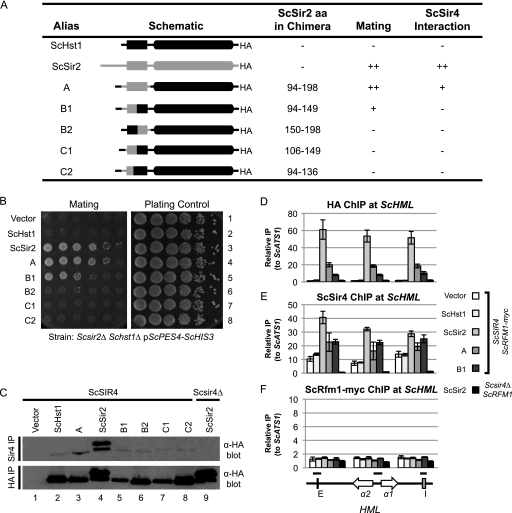Fig. 6.
ScSir2 aa 94 to 149 confer ScSir2 function on ScHst1. (A) Summary of chimeric proteins and their properties. (B) ScSir2-mediated silencing was assessed using a mating assay. A Scsir2Δ Schst1Δ mutant strain (LRY2083) was transformed with an empty vector or plasmids expressing the constructs shown in panel A. Mating was assessed as described for Fig. 2B. (C) The association of the chimeric proteins with ScSir4 was examined by co-IP. ScSir4 was immunoprecipitated from the same strains used in panel B or an Scsir2Δ Schst1Δ Scsir4Δ mutant strain (LRY2590) transformed with ScSIR2-HA. (D) The association of ScHst1, ScSir2, and chimeric proteins with HML was examined by ChIP. HA epitope-tagged proteins were immunoprecipitated from an Scsir2Δ Schst1Δ ScRFM1–myc mutant yeast strain (LRY2507) transformed with the empty vector or plasmids expressing the constructs shown in panel A or an Scsir2Δ Schst1Δ Scsir4Δ ScRFM1 mutant strain (LRY2590) transformed with ScSIR2-HA. (E) The association of ScSir4 with HML in the same strains as in panel D was assessed by ChIP. (F) The association of ScRfm1-myc with HML in the same strains as in panel D was assessed by ChIP. Black bars above HML indicate the locations of PCR amplicons.

